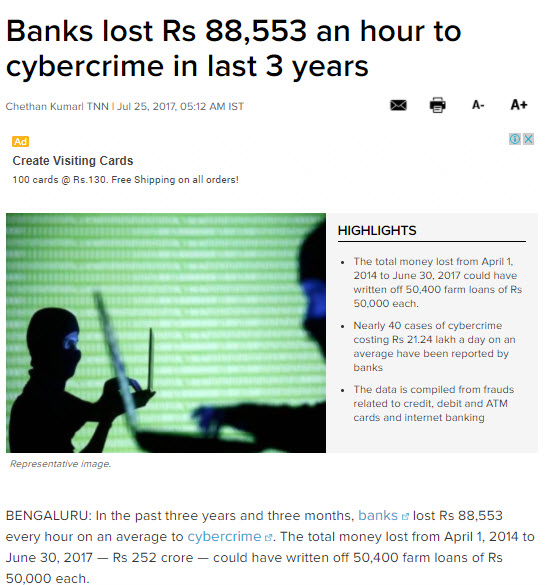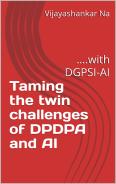It was way back on 17th October 2000 that ITA 2000 was notified and long with it the Indian Evidence Act 1872 got amended with several new sections being added to address the issue of Electronic Evidence. One such issue was the “Admissibility of Electronic Evidence” for which certain procedure was introduced under Section 65B, a new section that was introduced into the Act along with Section 65A,
Since then there has been lot of confusion in the traditional legal circles as well as the Judiciary on how the section should be applied in actual practice.
The First Case where Section 65B certificate was used
The undersigned was the first person in India to have submitted a Section 65B evidence in a Court which was admitted and used to convict the accused to a sentence of 5 years. It was the case of The Government of Tamil nadu Vs Suhas Katti in the AMM Court, Egmore, Chennai which was decided in 2004. (Refer www.ceac.in for more information and copy of the judgement).
The essence of the case was that an offence had been committed by the accused in the form of publishing of an electronic document on groups.yahoo.com. A message appeared there which was posted by the accused and involved some content which could be considered as “obscene” under Section 67 of ITA 2000. However there was no way we could have sent a police party to USA, and seize the electronic evidence in the form of the hard disk in the possession of Yahoo. But it was not necessary since Section 65B was available for us and a Print out of what was seen by me sitting in Chennai could be considered “also as a document” without the need for production of the “Original”. The Judge therefore continued the trial with a print out certified by me and pronounced the judgement. The defense raised the issue that I was not a Government appointed expert but the Court felt that that was not necessary. These were all very important judicial principles that the Judge of this Court actually enunciated though he was an unsung hero and no body praised him for his vision. (I hope some body traces this Judge and honours him even now).
Many judges even today call that hard disk in the yahoo server as the “Original Evidence” and anything else including a print out as “Secondary” evidence. This is the first myth that we need to break. In electronic documents there is no “original” electronic document that can be brought into the Court and handed over to the Judge. Only a “Container” can be handed over.
Secondly, many legal experts including some judges consider that if a Section 65B certificate is required to be submitted for an electronic document that is lying in the yahoo server, it has to be signed by the administrator of Yahoo. This is the second myth we need to break. Section 65B certificate is a certificate provide by an observer of an electronic document that he “experienced” the effect f the electronic document and affirms it through the certificate and the attached set of documents in print or electronic copies.
I have explained this a number of times but still it is necessary to repeat it if required.
Now even after the law came into being in 2000 and the Suhas katti judgemment came in 2004, being a judgement of a small Court lawyers failed to recognize the meaning of the judgement and the explanations that we have been giving ever since including the books that I have authored.
Section 65B under Supreme Court Radar
When the Supreme Court first addressed the issue in the Afzan Guru case, (Navjot Sandhu @Afzan Guru judgement dated 4/8/2005) some people took note since it was the decision of the Supreme Court. In this case the debate was that when the person who could have provided the Section 65B certificate himself is present in the Court and deposes on the electronic document, then there is no need for Section 65B certificate. Hence some of the CDs produced in that case which were also affirmed by the witnesses were accepted as evidence and the decision was taken.
Then came the celebrated three member judgement in the case of Anvar P.V. Vs P.K. Basheer (discussed in detail at Naavi.org) declared that the Afzan Guru judgement was wrong and it is mandatory that Section 65B certificate has to be produced for admissibility of all Electronic Evidences.
Subsequently a notification was issued by the Government under Section 79A regarding possible notification of agencies as “Digital Evidence Examiners” which created further confusion in the legal circles. Again Naavi.org explained its views in several articles to explain the role of Digital Evidence Examiners and how this is different from the Section 65B certificates provided at the time of admissibility. (see articles :The Role of “Notified Digital Evidence Examiners” and Clarification on Section 65B… Who should sign the Certificate? , More Clarification on Section 65B Certification… For Forensic Labs)
In all these discussions including after the Basheer case judgement, the classification of evidence as “Primary”and “Secondary” continued to prevail and cloud the decisions of the legal fraternity.
We have repeatedly held that in the case of Electronic Documents, the discussion of Primary and Secondary is superfluous and will lead to contradictions. Unlike the views of many in the legal circles and Judicial circles, a “Hard Disk” seized from a computer is not a “Primary” document and it is only a “Container” of an electronic documents. Similarly, even the CD is not a “Primary Electronic Document” but only a “Container of Electronic Document”.
A Container of electronic document contains many electronic documents and just as Police may seize a box from an accused house that contains say some tools of crime along with other things, a CD or a hard disk is a “Bx of electronic documents” and one or more of them is what we recognize as “Evidence” that is required for judicial examination.
Now in the case of Suhas Katti such an electronic document was one of the messages appearing on groups.yahoo.com amidst lakhs of other messages. This message appeared to a viewer as “Text” and the meaning assigned to the “Text” leads us to the conclusion that it is “Obscene” or “Defamatory” etc. That is, the viewer “Experiences” a text document which is rendered before him in a browser application running on windows operating system.
If the document was an image we would have seen an image. if it was an audio, we would have heard it.
The computer monitor is the device which makes the human being read a text document, a speaker gives out the sound that a human being hears and the combination of the monitor and speaker gives an experience of the video.
Though the experiences are different, behind the experience, the electronic document is a “String of binary characters” and nothing else. Hence all electronic documents are “Binary Documents”.
On the hard disk they may appear as magnetic orientations of individual cells. In the CD they may appear as depressions and flat surfaces (Pits and lands).
The electronic document is always an “Experience” of an observer when he renders the binary expression using one or more devices which we call computers, operating systems, applications, monitors, speakers etc.
It is this experience which the Judge wants the Section 65B certifier to bring to the attention of the Court with his confirmation that the experience is “reliable” and a judicial verdict can be based on it. Without such a certificate the judge cannot see the electronic document and if he views it on a computer then it will be his experience that becomes an evidence and the Judge himself becomes a witness. .
It is for this reason that Section 65B expects that some human being who can be relied upon should say that “When I opened this document using a certain process, this is what I saw or heard”… . Such a certifier is the person who experiences the certificate and it is not always necessary for the admin of the hosting company to provide the certificate.
Such a certification is mandatory and has been mandatory since 17th October 2000 and not just because the Supreme Court pronounced its judgement in the Basheer case.
Sonu@Amar Case
If we look at Sonu@Anvar appeal in the Supreme Court, the argument was that the electronic document relied upon were not certified under Section 65B and hence were invalid technically. The appellant therefore sought that his conviction for abduction and murder should be set aside.
There is no doubt that the Supreme Court went into a detailed debate on what happens when an evidence is technically imperfect and a decision has already been arrived at etc.
But what we need to take note is that this judgement has graciously acknowledged that some times the superior Court cannot go back in time and correct things and has to take a view on the issue within the limitations that are presented. For example if an innocent has been sentenced and later he is to be released, we can regret the effect of wrongful confinement but the Court cannot return the lost time.
The Court therefore finally decided that the appeal has to be rejected and in turn implied that at the appeal stage it is not necessary to re-open past cases where there has been no Section 65B certificate.
This does not mean that in future Court would show a similar concession if the Certificate is not obtained.
Hence the legal community should not now jump to either conclude that they can file uncertified documents and seek pardon later or start filing appeals for reversing earlier convictions where electronic evidence has not been properly certified under Section 65B.
The Court may however be under liberty to question the genuinity of any document in the interest of proper justice to be done if evidences have been manipulated and such manipulated evidence has been used to arrive at wrong judgements in the lower Court.
The Basheer judgement therefore was not recommended to be applied retrospectively though the first press reports as it normally happens were focussed more on the lines of thoughts discussed by the Judges in the judgement and gave an impression as if all the previous cases involving uncertified electronic documents would be annulled.
Fortunately, no such thing is happening though in future Courts will not take it kindly if the Certificate is omitted.
This, is the lesson we need to draw from this Sonu@Amar judgement. It does not condone non submission of certificate nor reverses the earlier Anvar Vs Basheer judgement nor calls for a review of all earlier cases. It upholds the earlier judgement unequivocally and for practical reasons applies it only in futuristic sense.
It is also to be noted that in the case of Section 65B, it is not a law created by the judgement of either Afsan Guru case or the Basheer case or this new Sonu@Amar case. The law was created with the notification of ITA 2000 and all the Courts are only trying to understand and give their views when there is a need to apply it in any specific judgement.
If people think that law is only when it is expressed by the Supreme Court, they can wait for every aspect of opinion expressed above to be brought out in some judgement in future. I am sure it will happen but it will happen in bits and pieces and will take a long time. In the meantime we may come to wrong inferences which we should avoid if possible.
I am sure that the debate may still continue… I invite comments on the above and would be glad to clarify.
Naavi







